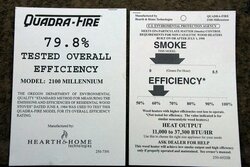E
elkimmeg
Guest
I was checking the updated EPA certification list and all PE stoves are listed 63% effeciencies
So are Englanders and VC
For that matter all non cat stoves are also Listed 63% all Cat Stoves 72%
So are Englanders and VC
For that matter all non cat stoves are also Listed 63% all Cat Stoves 72%


